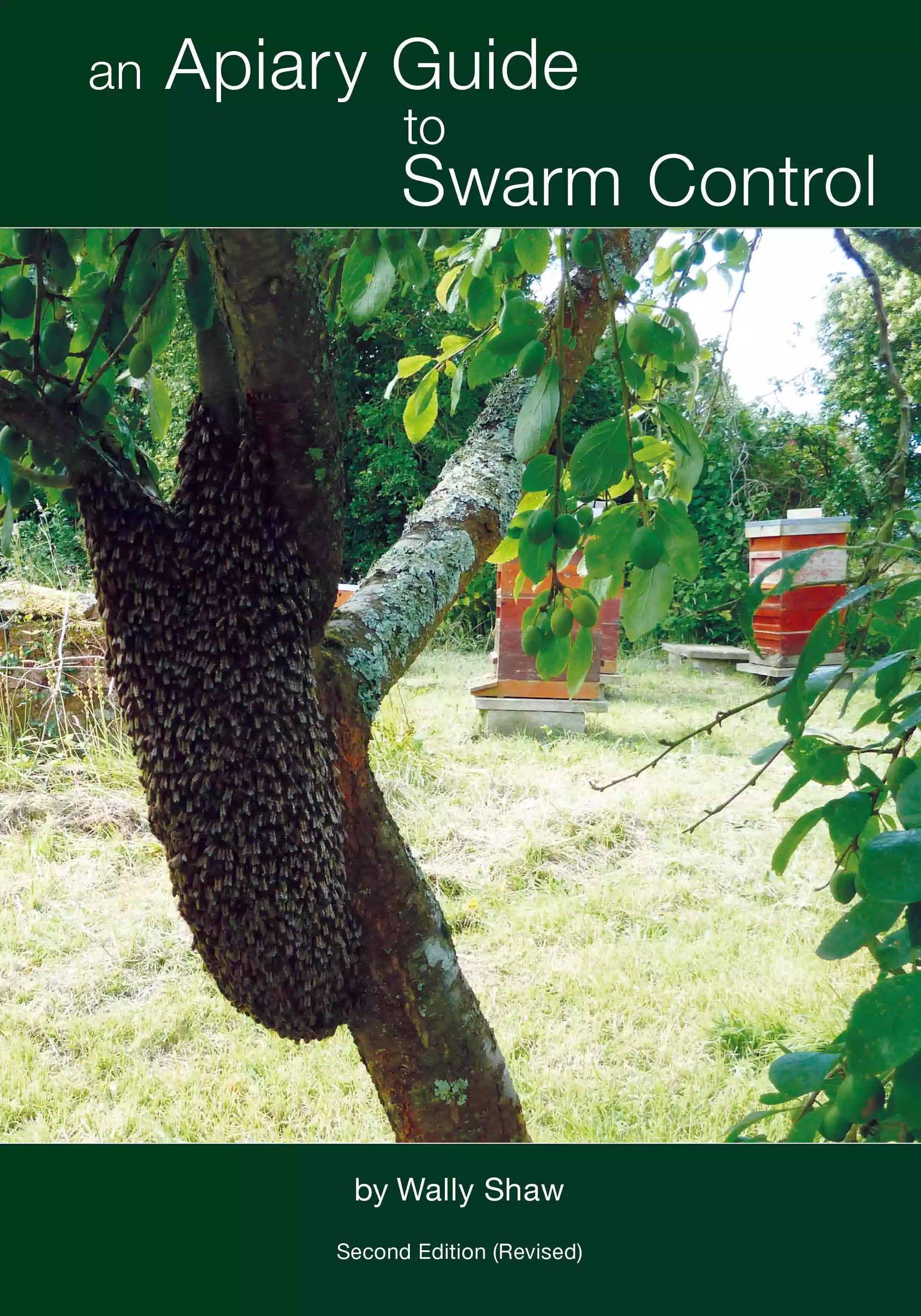An Apiary Guide to Swarm Control, Shaw

An Apiary Guide to Swarm Control
The title tells it all. This booklet originally published by the Welsh Beekeepers Association is a very sound introduction to swarm control for all small scale beekeepers.
There is no doubt that swarm control is simultaneously the most important and most difficult aspect of colony management with which beekeepers have to deal – if they chose to do so, of course. Swarming is also the most complex of the many behaviours that have evolved to enable a honey bee colony to successfully complete its life-cycle. This revised edition incorporates experience that has been gained by the author and others over the eight years since the first edition was written. Having all the necessary equipment to hand when it is likely to be required during the season and good logistics are the key to a successful outcome .. Safe handling of the queen is paramount. Although swarm control is often a matter of some urgency, it is advisable to carefully think through management techniques you are going employ in advance and, above all, keep calm.
VIEW Contents
- Introduction
- The booklet (or field guide)
- Types of swarm control
- Pre-emptive Swarm Control
- Triggers for swarming
- Comb management
- Box management
- Brood relocation
- Splitting colonies
- Re-active Swarm Control
- Determining the stage in the swarming process
- How to investigate
- Colony has not yet swarmed
- Colony has already issued the prime swarm but has not cast swarmed
- Colony has emerged queen cells and may (or may not) have issued a cast swarmed
- Colony appears to be queen-less and beekeeper as no idea what has happened and when
- Late season swarming
- Postscript
- Appendix 1: Further Discussion of the Pagden Method
- Appendix 2: Fault Finding
- Appendix 3: Recommended Logistics for the Second Manipulation
Unavailable